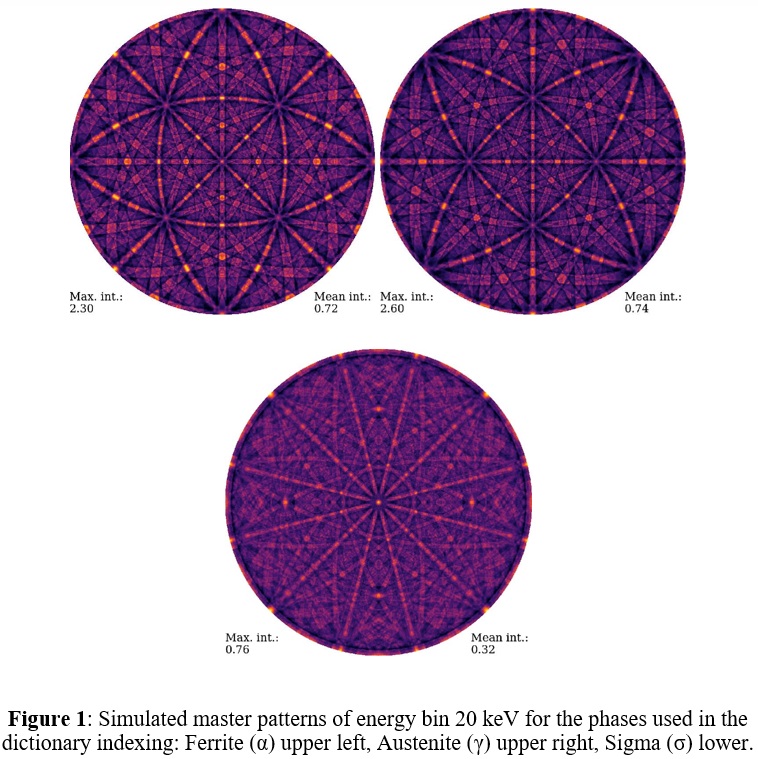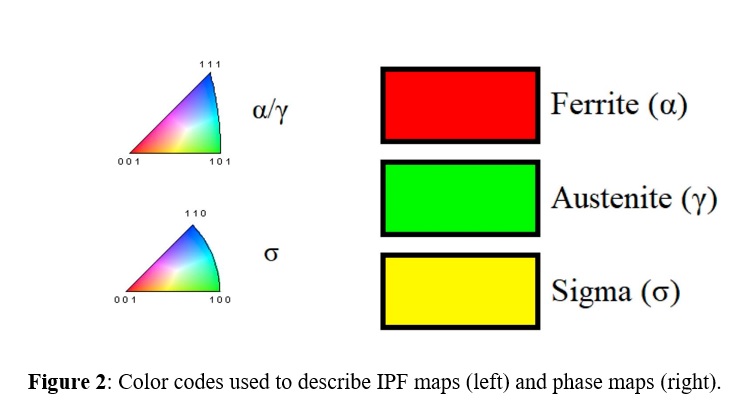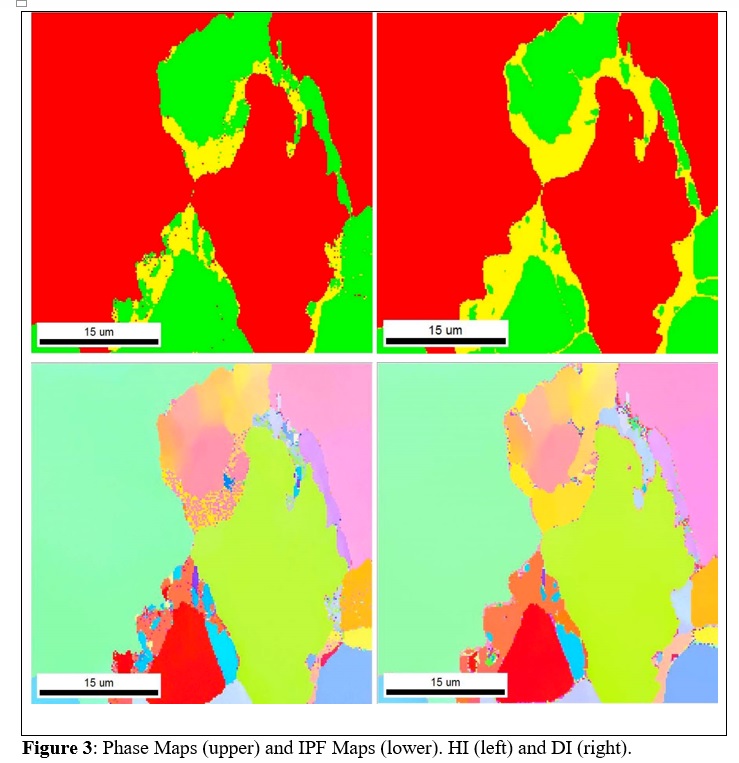EBSD Characterization of Super Duplex Stainless Steel Using the Hough Indexing and Dictionary Indexing Approaches
- Abstract number
- 1064
- Event
- European Microscopy Congress 2020
- DOI
- 10.22443/rms.emc2020.1064
- Corresponding Email
- [email protected]
- Session
- PSA.2 - Metals & Alloys
- Authors
- Vetle R. Østerhus (1), Håkon W. Ånes (1), Mona Haukali (1), Odd M. Akselsen (2), Ida Westermann (1), Morten Karlsen (1), Jarle Hjelen (1)
- Affiliations
-
1. NTNU
2. SINTEF
- Keywords
Dictionary indexing
EBSD
Hough indexing
SDSS
- Abstract text
Super duplex stainless steels (SDSS) are due to their combination of high corrosion resistance and good mechanical properties used in industries where these material properties are of importance, e.g. in the oil and gas industry. A problem with SDSS is the formation of intermetallic sigma (σ)-phase at elevated processing temperatures, which reduces the materials’ mechanical properties and resistance against corrosion. One way to characterize the intermetallic phases is with EBSD. However, the well-established Hough indexing (HI) approach often has problems when indexing these phases. HI must be capable to extract the Kikuchi bands from the pattern, but low signal-to-noise ratio makes this task more difficult. The newer Dictionary indexing (DI) approach has proven itself as capable of obtaining better results when compared to HI. Instead of being dependent on extracting the bands, the whole pattern is simulated and matched against the experimental patterns.
A SDSS sample was heat treated at 900°C in 8 minutes followed by a heat treatment at 300°C for 4 weeks. The sample had an intermediate time rest at room temperature between the two heat treatments. The sample was further examined with EBSD in SEM. The diffraction patterns were acquired with a NORDIF UF-1100 EBSD detector attached to a Zeiss Ultra 55 FESEM. The EBSD patterns where streamed to harddisk and later off-line indexed both with the HI and the DI approach. For HI, EDAX TSL OIM Data Collection version 7.3.b was used. For DI, EMsoft [1] was used. In Figure 1 the master patterns for ferrite (α), austenite (γ) and σ are presented. In Table 1 the phase fractions obtained by the HI and DI are presented. In Figure 3 the obtained phase maps (PMs) and Inverse Pole Figure (IPF) maps are shown.
The DI approach detected more than twice as much σ-phase as HI at the expense of the α and γ phases. Diffraction patterns from the σ-phase are typically more noisy than the α and γ patterns. DI is able to index patterns with very low signal-to-noise ratio. Grain- and phase boundaries will therefore look more well defined when using DI. DI still has its drawback in arguably having a higher threshold for first time users. Compared to HI softwares, EMsoft also requires more time and/or computer capacity for indexing. When getting more experienced in running indexing in EMsoft, the software has its advantage of being more open about the indexing process and what effect the parameters have. TSL OIM is easier to use and indexing is faster, but it gives the user a limited insight in the effect of changing the available parameters, or how to customize these for optimal indexing.
Table 1: Phase fractions of the sample examined for HI and DI
Phase
Fraction, HI (%)
Fraction, DI (%)
Relative Change
Ferrite (α)
51.5
50.4
-2.14 %
Austenite (γ)
45.6
43
-5.70 %
Sigma (σ)
2.9
6.7
231 %
The values presented here are not corrected against any mis-indexing rate
- References
[1] Chen, Yu H., Park, Se Un, Wei, Dennis, Newstadt, Greg, Jackson, Michael A., Simmons, Jeff P., De Graef, Marc, Hero, Alfred O., A Dictionary Approach to Electron Backscatter Diffraction Indexing, Microscopy and Microanalysis 21(3), 739–752, 2015.



